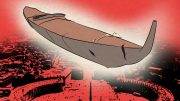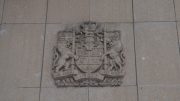Nootka Island rests off the west coast of Vancouver Island and has been a site of colonial contestation for centuries. In the late 1700s, the inlet east of Nootka Island was geographically important for trade due to its calm shelter from ocean currents. As such, the Spaniards, who initially laid colonial claim to North America’s West Coast, took exception to British presence in the inlet due to contradicting definitions of sovereignty. The Spanish claimed they had discovered the area first, while the British noted that to claim land, nations must settle it first — of course, each claim was bogus, considering a handful of Indigenous nations occupied the land before Europeans were ever aware of its existence. War over the land claim was ultimately avoided through the Nootka Sound Convention, which recognized both colonial powers’ rights to fish, trade, navigate and settle the area.
Fast forward to 1846 and Spanish presence on Vancouver Island had faded. Instead of the Spanish, the United States and Britain were vying for sovereignty over the West Coast. The issue was one of the most consequential moments of each colonial state’s history. Bargaining for land on the West Coast became so important that it influenced the election of president James K. Polk in 1844, whose slogan was “54-40 or fight!” — referencing the parallels where he wished to draw the Canada-U.S. border. Keen to avoid another war with the U.S., the British agreed to draw the border at the 49th parallel, which officially transitioned Nootka Island, according to British law, into Crown land.
The problem with these grand claims to sovereignty is that each state failed to recognize unceded Indigenous territory. Claims to sovereignty were often made via arguments of discovery or terra nullius — a Eurocentric law that only recognized property rights if groups or individuals cultivated land according to western-defined agricultural methods — even though the land was already used to support the lives of various Indigenous groups.
As Audra Simpson writes in her seminal book Mohawk Interruptus: Political Life Across the Borders of Settler States, “the United States and Canada can only come into political being because of Indigenous dispossession […] Those who still live this struggle with different political authorities find themselves in a ‘nested’ form of sovereignty and in politics of refusal.”
Now, 176 years later, the Nuchatlaht First Nation is refusing to recognize Canadian sovereignty over their hereditary land, which encompasses about 200 square kilometres of Nootka Island. Centuries of western contestation, deliberation and dispossession have come full circle and the Nuchatlaht are making their case for getting their land back in the Supreme Court of British Columbia.
The Nuchatlaht claim centuries of commercial activity on their land have benefited everybody but them, and they are right to argue this. The Nuchatlaht were virtually evicted from their land following the 1846 border agreement.
After 1846, Nootka Island was turned into Crown land and expropriated without consultation or treaty. This meant cutting trees or building settlements without a lease was illegal. The Nuchatlaht were subsequently alienated and dispossessed from their land which forced them to settle off the island.
B.C.’s provincial government has obscured this fact and claims the Nuchatlaht abandoned the land, giving the province legal tenure to manage resources on the island and dish out contracts and licenses to extractive industries. As a result, the forestry industry has clearcut nearly 80 per cent of the island’s old-growth forest. Further, industrial activity has decimated spawning rivers for salmon and threatened fishing communities’ livelihoods downstream. Not only has the Canadian government dispossessed the Nuchatlaht of their land, but it is rapidly decimating the region’s surrounding ecology — consequently giving haste to community members who are desperate to save what they can.
Beyond just Nootka, this case may be a turning point for Indigenous land claims in B.C. and potentially Canada. It is the first time that an Indigenous group seeking their land back will use the Tsilhqot’in land ruling as precedent. In 2014, the Supreme Court of Canada ruled the Tsilhqot’in were entitled to over 1,700 square kilometres of their hereditary lands outside of reserve sites. Because the group was semi-nomadic, the B.C. provincial government argued the Tsilhqot’in should only receive village sites back. However, for the first time, the highest court in Canada recognized sovereignty based on semi-nomadic lifestyles and incorporated the land linking these settlements. In sum, it was a massive overturning of traditional property law and centuries of terra nullius that had hampered so many Indigenous land claims in the past.
Although the Nuchatlaht First Nation is a small community consisting of 151 members, it has the potential to make a massive splash in the Canadian legal community. Indigenous land claims consistently have to prove their lineages’ use of land within a biased settler framework. In a sense, they have to play a game where the rules are defined and redefined by their competitor.
The case the Nuchatlaht are currently upholding not only has the potential to reclaim land that has been juggled by the international community for centuries, it could also be the site that redefines the very parameters that have distinguished and marginalized many Indigenous claims to sovereignty from Canada’s systemically biased legal mechanisms. Precedent was set by the Tsilhqot’in, but it will be cemented by Nuchatlaht, should their case stand. Nootka Island finds itself at yet another crucial historical juncture, but this time it’s the island’s Indigenous people leading the way.




